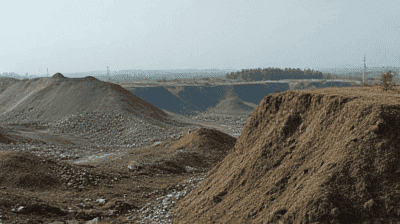
Landfills have long been the go-to solution for managing waste generated by our increasingly consumer-driven society. While they serve as a convenient method for disposing of solid waste, the hidden costs of landfills go far beyond their operational expenditures. Two significant environmental issues associated with landfills are methane emissions and soil contamination. These byproducts not only impact local ecosystems but also pose serious threats to human health and contribute to global climate change.
A landfill is a designated area for the disposal of waste materials where trash is buried underground. The waste is carefully layered and compacted to minimize its volume. Over time, landfills can become anaerobic environments, fostering the conditions necessary for the decomposition of organic materials. While landfills are designed with some environmental protections, they still pose significant risks.

When waste is deposited in a landfill, it goes through various stages of decomposition, influenced by factors such as moisture, temperature, and the composition of the waste itself.
Aerobic Decomposition: Initially, waste undergoes aerobic decomposition, where aerobic bacteria break down organic materials in the presence of oxygen. This process produces carbon dioxide.
Anaerobic Decomposition: As layers of waste accumulate and oxygen becomes scarce, anaerobic bacteria take over. This process leads to the production of methane—a potent greenhouse gas.
Leachate Formation: As waste breaks down, it generates leachate, a toxic liquid that can leach into the surrounding soil and groundwater, leading to contamination.
Methane (CH4) is a colorless, odorless gas that is produced during the decomposition of organic matter in anaerobic conditions, such as those found in landfills. Although methane has several uses, including being a fuel source, it is predominantly recognized as a potent greenhouse gas.
Methane is significantly more effective at trapping heat in the atmosphere than carbon dioxide, with an estimated global warming potential that is 25 times greater over a 100-year period. This makes methane emissions from landfills a significant contributor to climate change:
Landfills are one of the largest sources of methane emissions in many regions. According to the U.S. Environmental Protection Agency (EPA), landfills account for approximately 14% of total methane emissions in the United States.
Efforts to mitigate methane emissions from landfills include:

Soil contamination occurs when pollutants seep into the soil, leading to adverse effects on plant life, water quality, and human health. In landfills, soil contamination can stem from leachate formation, which arises when water percolates through waste and carries dissolved and suspended materials into the soil.
Soil contamination can have dire consequences for the environment and public health:
To mitigate soil contamination issues associated with landfills, several strategies can be implemented:
The hidden environmental costs of landfills translate into economic consequences as well. While the immediate costs of waste disposal may appear low, the long-term implications can be significant.
The costs associated with soil remediation and pollution cleanup can be extensive. Communities may bear the financial burden of addressing contamination issues arising from nearby landfills, which can include:
The presence of landfills and the risks associated with nearby contamination can reduce property values in surrounding neighborhoods. Homeowners may experience decreased marketability of their properties, leading to economic losses.

Given the various hidden costs associated with landfills, it is imperative to explore sustainable alternatives for waste management.
Recycling reduces the amount of waste that ends up in landfills by transforming materials into new products. By promoting effective recycling programs, municipalities can divert significant quantities of waste while conserving natural resources.
Composting organic waste keeps food scraps and yard debris out of landfills, reducing methane emissions. It fosters soil health and is a viable alternative for managing organic waste.
Waste-to-energy facilities convert non-recyclable waste into usable energy, such as electricity and heat. This method can reduce landfill reliance while providing an alternative energy source.
Implementing EPR programs can hold manufacturers accountable for the lifecycle of their products, encouraging them to design items that are easier to recycle or that produce less waste.
Engaging local communities and educating residents about waste reduction practices is essential. Initiatives promoting minimalism, responsible consumption, and sustainable practices can empower citizens to take an active role in reducing waste.
The hidden costs of landfills—specifically methane emissions and soil contamination—present serious environmental and economic challenges for society. Understanding these issues is crucial for driving change in waste management practices. By prioritizing sustainable alternatives such as recycling, composting, and waste-to-energy technologies, communities can move toward a more circular economy that minimizes reliance on landfills.
Ultimately, addressing the hidden costs of landfills requires collaboration among governments, businesses, and individuals to foster a culture of sustainability. By actively engaging in waste reduction strategies, we can mitigate the impacts of landfills and work toward a cleaner, healthier planet for future generations.